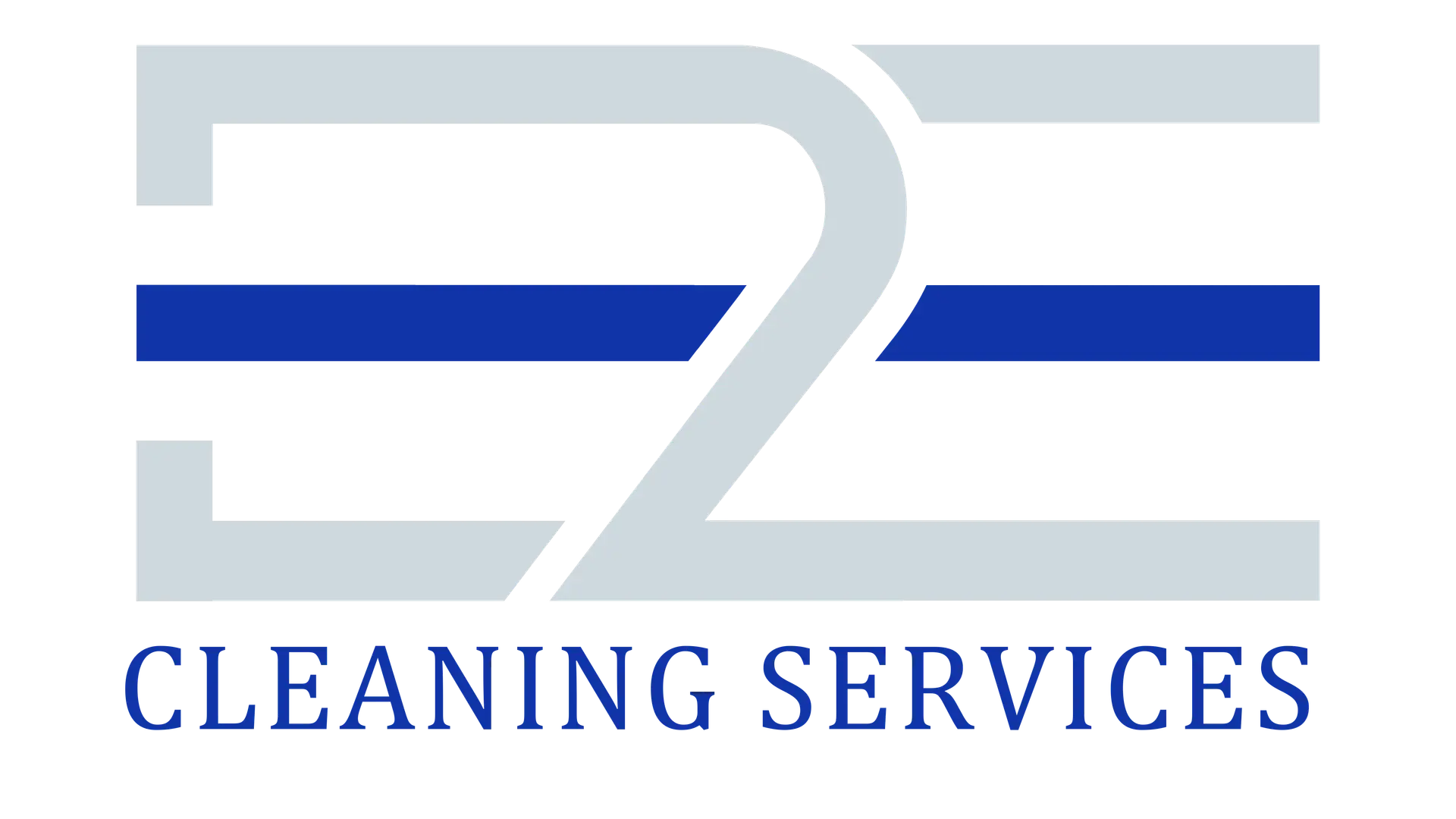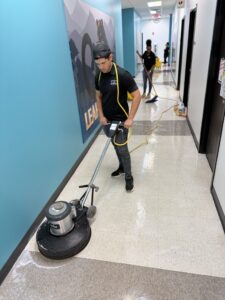This section covers the comprehensive cleaning protocols required before restaurant opening, including specialized methods for kitchens, dining rooms, and food-service areas.
A study of professional cleaning standards, health code requirements and strategic planning will ensure that a restaurant opens with pristine spaces that meet customer expectations and pass regulatory inspections.
The Make-or-Break Moment: Why Post-Construction Cleaning Matters
The time between the completion of a construction project and the opening of the restaurant is the most critical period of the launching process. Although owners usually focus on menu creation, employee education, and advertising campaigns, the state of the facility often dictates whether the necessary health department license is acquired and whether the customers get a positive first impression.
The end of the construction process does not only leave visible waste, but also microscopic dangers, which endanger the safety of food. An example of such dust is the drywall dust that contains very small particles of silica which can cause contamination of preparation surfaces. Sawdust acts as an allergen store.
Furthermore, paint fumes and leftover adhesive can spoil food flavours, posing a risk to respiratory health. It has been shown that over 60 percent of the initial health inspection failures identify the contamination due to construction as the main factor.
According to the National Restaurant Association, the distinction between a construction site and a food service establishment must be absolute. Construction residue contains compounds that pose serious health risks in food preparation areas, so this is a cornerstone of food safety best practices.
This is not just a cleaning stage, this is a transformational stage. Adequate post-construction cleaning determines the level of sanitation that the restaurant will be following during its operation. Most facilities fail to appreciate its holistic nature and hurry to complete the task as per opening schedules.
However, construction residue is one of the aspects that health inspectors pay particular attention to during the initial inspection, since its presence indicates poor preparation and can be an indication of future cleanliness shortcomings.
Finally, a restaurant never gets a second chance to impress clients on the first day of opening. Tourists will not differentiate between the dust of the construction that happened yesterday and the neglect of the day.
Understanding Post-Construction Cleaning Challenges for Restaurants
In the hospitality sector, restaurant post-construction cleaning is a unique process that offers greater challenges than those that are common in other forms of commercial buildings. Effective cleaning strategies can be formulated through formal knowledge of these complexities.
The risks of the debris produced during the renovations are not confined to the usual commercial locations. Specifically, fine concrete dust may accumulate in porous materials like grout lines and natural-stone countertops, thus providing a breeding medium of pathogens. Cabinetry wood finishing compounds and adhesives also have chemicals that can be transferred to food preparation areas.
Moreover, HVAC fibrous insulation debris may spread all over the establishment contaminating food and irritating the respiratory tract of employees and patrons.
Maria Sanchez, a certified kitchen sanitation specialist, says that restaurant post-construction cleaning is not merely a matter of eliminating visible contaminants; it is a matter of creating surfaces that can pass health department tests of bacterial load reduction. As a result, the task involves cleaning and sanitizing processes.
The standards of regulatory compliance vary depending on the jurisdiction but typical health code requirements are:
- Food contact surfaces free from construction residue and capable of being sanitized to 99.999% pathogen reduction
- Ventilation systems clear of construction dust that could contaminate food
- Water systems flushed of construction debris with bacterial tests for potability
- Floors that are sealed accordingly to the place where they are placed (kitchen or dining)
There are some contamination sites that deserve special attention. Health inspectors regularly check behind equipment, in air ducts, and above drop ceilings where cleaning procedures are frequently not included in a regular cleaning program.
All cabinets and drawers that will be used to store clean utensils should be decontaminated. Light fixtures collect construction debris in a systematic manner and when vibrated, the particles can be scattered on the surfaces below.
Sufficient cleaning should disregard the apparent cleanliness as well as the invisible sanitation needs. This does not only involve dust removal but also the use of sanitizing agents to achieve the microbial-reduction levels required by the current health codes.
Kitchen equipment requires specialized cleaning protocols. Click Here
The Critical Areas That Demand Attention
Kitchen Spaces: Where Sanitation Standards Are Highest
The commercial kitchen is the environment in which the sanitation standards should be followed the most conscientiously. Food preparation surfaces should not only be cleaned of any visible debris, but also sanitized with cleanser that can kill microorganisms.
Stainless steel finishes, especially, need special cleaning agents specially formulated to clean construction residue without destroying the passive oxide film that gives stainless steel its natural antimicrobial properties.
Cleaning of equipment also requires a combination of mechanical and sanitation skills. New ranges, ovens, refrigeration units and dishwashers usually hold construction debris in electrical compartments and mechanical parts. These spaces are to be thoroughly cleaned following the instructions of manufacturers to ensure the integrity of equipment and the safety of food.
Tony Hernandez, one of our specialists in cleaning commercial kitchens, notes that we dismantle equipment as far as is safe in order to eliminate construction debris from the interior parts. He continues by stating that dust in refrigeration coils contains contaminants and lowers energy efficiency by up to 30 per cent.
Floor drains deserve special attention as cleaning priorities. The construction materials tend to get their way into the drainage lines thus causing partial blockages which can be evident during normal operation. These drains should be flushed and sanitized thoroughly to avoid the growth of bacteria.
Dining Areas: Creating the Customer Experience
Designing a dining atmosphere involves issues that revolve around aesthetics and comfort of guests. The standards of health-codes are less strict in non-food-preparation areas, but these areas are the first impression of the restaurant.
Windows and other glass surfaces require special, after-construction cleaning to get rid of adhesive residues, paint overspray, and construction dust without causing scratches. Light fixtures accumulate a lot of dust in the course of construction and should be thoroughly cleaned so that the dust does not fall on the dining tables.
Booth seating is often upholstered, and construction dust is a common component of upholstery. This dust is released into the air when customers sit down. These fabrics require extraction cleaning rather than mere vacuuming to remove embedded particles.
Moreover, HVAC systems require deep cleaning prior to use. Unless addressed, construction dust inside ductwork can circulate in the restaurant many months after opening. Such continuous contamination is successfully avoided by professional duct cleaning using HEPA filtration.
What most restaurant owners fail to understand is that construction dust remains in the ventilation systems long after opening unless it is thoroughly cleaned, observes ventilation expert James Williams. This poses health issues and high maintenance costs on HVAC systems.
Professional vs. DIY Cleaning: Making the Right Choice
The difference between professional restaurant post-construction cleaning and a standard cleaning is an essential economic decision that goes beyond initial costs. Even though hiring professional firm requires relatively higher initial expenses, do-it-yourself approaches are likely to create unexpected expenses in terms of delayed openings, inspection failures, and equipment breakages.
Post-construction cleaning costs vary based on facility size and complexity, but the investment covers more than just cleaning. You’re getting specialized equipment, food-service trained staff, appropriate chemical systems, and the compliance documentation required for health department approval.
Former health inspector Maria Rodriguez notes that the opening certification process must be documented to indicate that proper sanitization procedures have been followed. This documentation is a standard practice of professional services, whereas DIY methods usually lack documentation.
Even though a DIY solution can appear cost-effective at first, it comes with significant drawbacks:
- Lack of access to commercial grade equipment such as HEPA-filtered extraction systems
- Lack of awareness of health codes in restaurants environments
- Lack of adequate training on how to use food-safe chemicals
- Potential of breaking costly equipment when cleaning
- Longer cleaning periods causing postponement of opening hours
The difference in expertise is especially important in the case of correcting the concealed contamination. Professional services have a complete understanding of the areas of inspection that health departments focus on, but DIY methods usually clean only the visible surfaces.
Insurance also works in favour of professional services. Most of them have liability insurance to cover any damage that might occur during the cleaning process, and they guarantee health inspections. DIY methods place the entire responsibility on the restaurant owner, who may face significant financial liability in the event of equipment damage or delayed inspections.
Floor Cleaning: The Foundation of Your Restaurant’s Cleanliness
Floor surfaces require special consideration in post-construction cleaning as it forms the biggest surface area in the restaurant and poses serious safety concerns. Various flooring materials need special cleaning methods in order to reach the standards of sanitation and appearance.
Kitchen floors are usually quarry tile or sealed concrete, which are very difficult to clean, to clear construction grout haze, adhesive residues, and concrete dust. Such surfaces require pH neutral cleaners that can clean up construction residue without damaging grout or sealants.
After cleaning, kitchen floors need commercial grade sealants which make them slip resistant and avoid penetration of bacteria into porous surfaces.
According to safety consultant Rebecca Johnson, kitchen floor cleaning is a sanitation and safety concern. Cleaning and sealing should be done and proper slip-coefficient test should be done to make sure that the workplace is OSHA compliant.
The floors in dining areas have various issues depending on the choice of materials:
- Hardwood floors should be cleaned with care and without the use of water to eliminate the dust of the construction process and then be finished properly
- Deep extraction cleaning of carpet with HEPA filtration is necessary to clean construction debris embedded in carpet
- Tile and stone require proper pH-balanced cleaners which do not harm sealants and eliminate grout haze
The change of the flooring materials requires special consideration. These junctions are the places where construction waste tends to gather, causing aesthetic problems as well as a risk of tripping in case it is not cleaned up.
Floor protection systems are to be used after cleaning to preserve cleanliness during final setup. Final preparations are made with proper floor matting at entrances that trap the construction dust left on staff shoes.
Maria Gomez, a restaurant cleaning trainer, explains that floor cleaning sets the standard of the continuous maintenance operations. The methods employed in the post-construction cleaning are to be noted and incorporated into the routine maintenance procedures once the facility is opened.
Kitchen Deep Cleaning: Beyond Surface Level
The sanitisation of commercial kitchens following construction requires a systematic approach that addresses not only apparent cleanliness, but also microbial safety requirements. This goes far beyond aesthetic concerns, aiming to create environments that are truly food safe and meet regulatory requirements.
Cleaning of equipment installed in new commercial kitchen fixtures is a process that takes several steps.
To start with, exterior and interior components should be cleared of construction debris with the help of HEPA-filtered vacuum systems.
Then, degreasers that are food-safe eliminate any manufacturing oils or installation residues.
Lastly, food-contact surfaces must be sanitized using quaternary ammonium compounds or other sanitizers approved by the health department, to produce a 5-log reduction of microbial contamination.
Former health inspector Thomas Williams says that most health inspectors will swab surfaces during initial inspections to determine whether proper sanitization has taken place. The documentation of sanitizer concentration and contact time can be used to speed up approval processes.
Ventilation systems need special cleaning that cannot be done using the normal HVAC methods. During installation, kitchen exhaust hoods accumulate a lot of construction dust which poses a possible fire hazard unless handled. Professional cleaning involves:
- Full stripping of available hood parts
- Exhaust fan and motor protective coverings removal
- Cleaning of nozzles of fire suppression to guarantee their functionality
- Cleaning records that can be approved by fire marshal
Walk-in refrigeration has its own problems. Contaminants are introduced by usage of these spaces to store tools during final construction. Thorough cleaning entails sanitizing all shelves, ensuring that drains are working, and ensuring that correct air circulation patterns are present after cleaning.
Before food service operations can be conducted, plumbing systems must be flushed and tested. Ice machines can be contaminated by construction debris in water lines and this will interfere with the quality of the beverages. Professional services clean all water lines and test potability to make sure it meets clean water standards.
Food safety consultant David Chen says, the kitchen cleaning process forms the basis of continuous food safety programs. The criteria set during post-construction cleaning will be the starting point of HACCP implementation after opening.
Timeline and Planning for Opening Day Success
Post-construction cleaning is a crucial part of the successful opening of restaurants, and its strategic planning is an essential aspect. This project requires simultaneous organization of the construction crews, cleaning experts, equipment suppliers, and health inspectors to ensure effective movement towards the opening day.
The best cleaning schedule will start with a pre-cleaning meeting that will be conducted about two weeks before the construction is complete. This evaluation determines particular cleaning issues, creates individualized procedures, and creates coordination processes between the construction and cleaning teams.
A gradual cleaning process usually follows the following steps:
- Rough Cleaning (Days 1-2): Removal of large construction debris, initial HVAC cleaning, and dust removal from structural surfaces
- Equipment Cleaning (Days 3-4): Detailed cleaning of all kitchen equipment, ventilation systems, and food service infrastructure
- Surface Sanitization (Day 5): Application of food-safe sanitizers to all preparation surfaces and food contact areas
- Floor Restoration (Days 6-7): Deep cleaning and sealing of all floor surfaces according to health code requirements
- Final Detailing (Day 8): Touch-up cleaning, window polishing, and final preparation for health inspection
According to restaurant consultant Maria Rodriguez, the most common error committed by many restaurants is to have their health inspection done prior to a comprehensive post-construction cleaning. This usually leads to unsuccessful inspections and opening delays that cost thousands of dollars in lost revenue.
It is also necessary to coordinate with other opening activities. Cleaning must be done before training of the staff to give employees a good foundation of maintenance work. The delivery of foodstuffs should be done after the cleaning process to avoid contamination of the cleaned areas.
The documentation during the cleaning process brings in operational benefits as well as regulatory compliance. Keep records of:
- Safety data sheets of cleaning products to be reviewed by the health department
- Test results of sanitizer concentration
- Verification of cleaning of HVAC and ventilation systems
- Flushing of the plumbing system and water test results
Food safety consultant Thomas Johnson suggests that post-construction cleaning should be the initial step in your HACCP food safety program. The records that are made in this process are then incorporated in your food safety management system.
Conclusion: Ensuring Ongoing Cleanliness Beyond Opening Day
The final stage of construction to opening the restaurant must be done in such a way that a lasting reputation of cleanliness and quality is established. The strict post-construction cleaning programme establishes a baseline level of sanitation that all future operations will be expected to conform to.
Investing in thorough cleaning measures pays off in the dividends of passing health inspections, making a positive first impression on customers and reducing maintenance costs in the long run. By comprehending the expert requirements of the restaurant setting, one can improve the aesthetic value and food safety standards.
It is important to realise that the cleanliness on the opening day sets customer expectations for the entire business. The standards that were set in the process of post-construction cleaning must be preserved by conducting well-documented daily, weekly, monthly cleaning processes. Educate employees on the usefulness of upholding these standards and set up a routine deep cleaning on the restaurant operating calendar.
The first impression is what establishes a restaurant’s reputation. If you make it a representation of the quality and attention to detail that form part of your culinary vision, you will gain an excellent reputation that will last.






